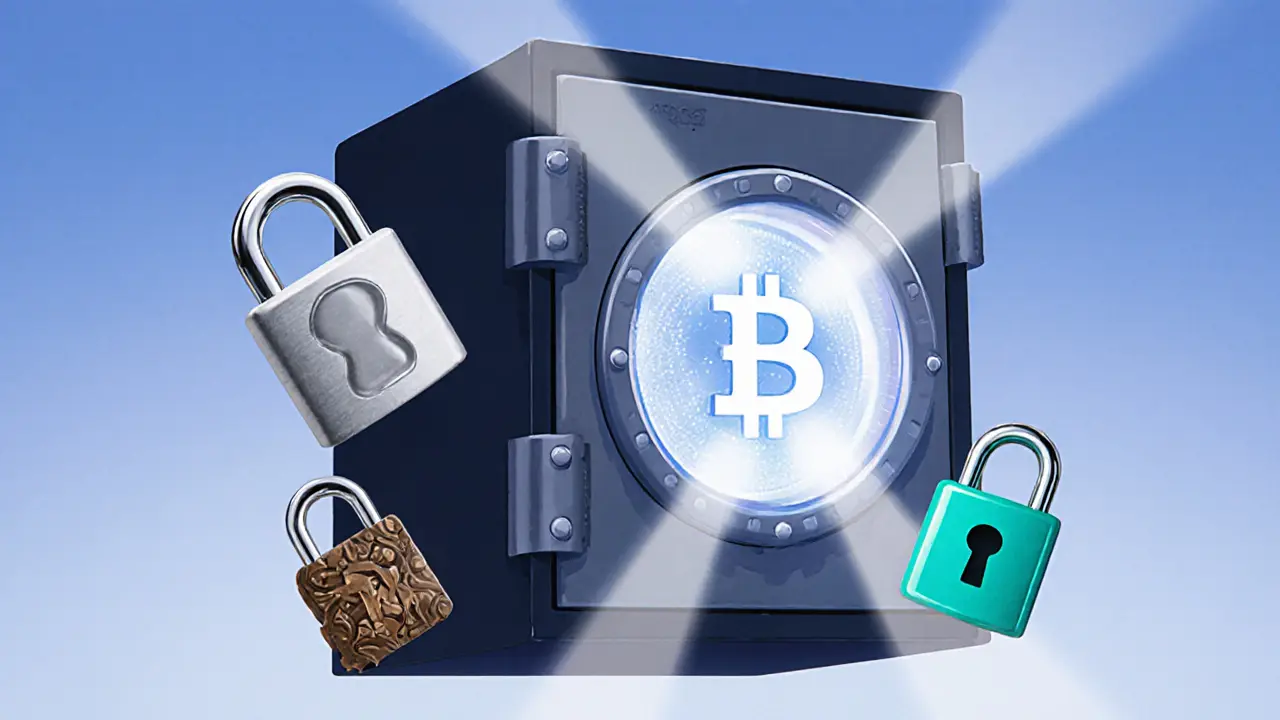Learn practical MultiSig wallet security best practices for 2025, covering M‑of‑N setups, hardware wallets, time‑locks, MFA, monitoring, and recovery planning.
M-of-N: What It Is and Why It Matters in Crypto
When working with M-of-N, a cryptographic scheme that lets any M out of N participants create a valid signature. Also known as threshold signature, it solves the single‑point‑of‑failure problem that plagues traditional private‑key systems. By spreading signing power across multiple keys, M-of-N makes theft, loss, or insider abuse far tougher.
One of the core building blocks of M-of-N is threshold signatures, cryptographic methods that require a subset of keys to produce a single, indistinguishable signature. They differ from simple multi‑signature wallets because the output looks like a regular signature, keeping transaction sizes low and privacy high. Another key piece is distributed key generation (DKG), a protocol where participants jointly create a shared secret without ever exposing individual private keys. DKG ensures the secret never lives in one place, so even if a server is compromised, attackers can’t reconstruct the full key.
How M-of-N Connects to Real Crypto Risks and Opportunities
Centralized exchange tokens often sit behind a single custodial key, making them vulnerable to hacks and operational mishaps. Applying M-of-N to exchange custody splits authority among multiple teams, cutting down the odds of a successful breach. This mirrors the security lessons from our post on Centralized Exchange Token Risks, where we show how multi‑sig setups reduce custodial exposure.
Beyond exchanges, M-of-N shows up in NFT platforms and airdrop mechanisms. When a project like MagicCraft Genesis NFT distributes rewards, a threshold signature can verify the claim without exposing the smart‑contract owner’s private key. The same logic protects creator‑driven social tokens, tokens that grant community access and reward creators. By requiring, say, 3 of 5 project leads to approve a token mint, the platform avoids single‑person abuse while keeping the user experience smooth.
Digital signature vulnerabilities—quantum attacks, malleability, replay attacks—are another area where M-of-N shines. A threshold signature can be engineered to resist quantum‑type threats by rotating signing subsets, and because the final signature looks ordinary, it sidesteps many replay scenarios. Our guide on Common Digital Signature Vulnerabilities in Crypto explains how adding a threshold layer mitigates these weaknesses without redesigning the whole protocol.
On the consensus side, blockchains that use Proof‑of‑Stake or Byzantine Fault Tolerance often rely on committee voting. Embedding M-of-N into the validator set lets any M of N validators finalize a block, boosting resilience against 51% attacks. This ties back to the Understanding Double‑Spending and 51% Attacks article, where we note that a well‑distributed signing group makes it economically infeasible for an attacker to control a majority.
Finally, token tax and regulatory compliance benefit from transparent key management. When a crypto trader in the UAE or India uses an M-of-N wallet, the split keys can be assigned to separate legal entities, simplifying audit trails and meeting anti‑money‑laundering (AML) requirements. Our tax guides for India and the UAE touch on how clear custody structures reduce regulatory friction.
All these examples illustrate why M-of-N is more than a niche cryptographic trick—it’s a practical tool that cuts risk, improves privacy, and fits into everyday crypto operations. Below you’ll find a curated set of articles that dive deeper into each of these angles, from exchange security and NFT drops to signature flaws and consensus design. Explore the collection to see how M-of-N can be applied to your own projects and investments.





